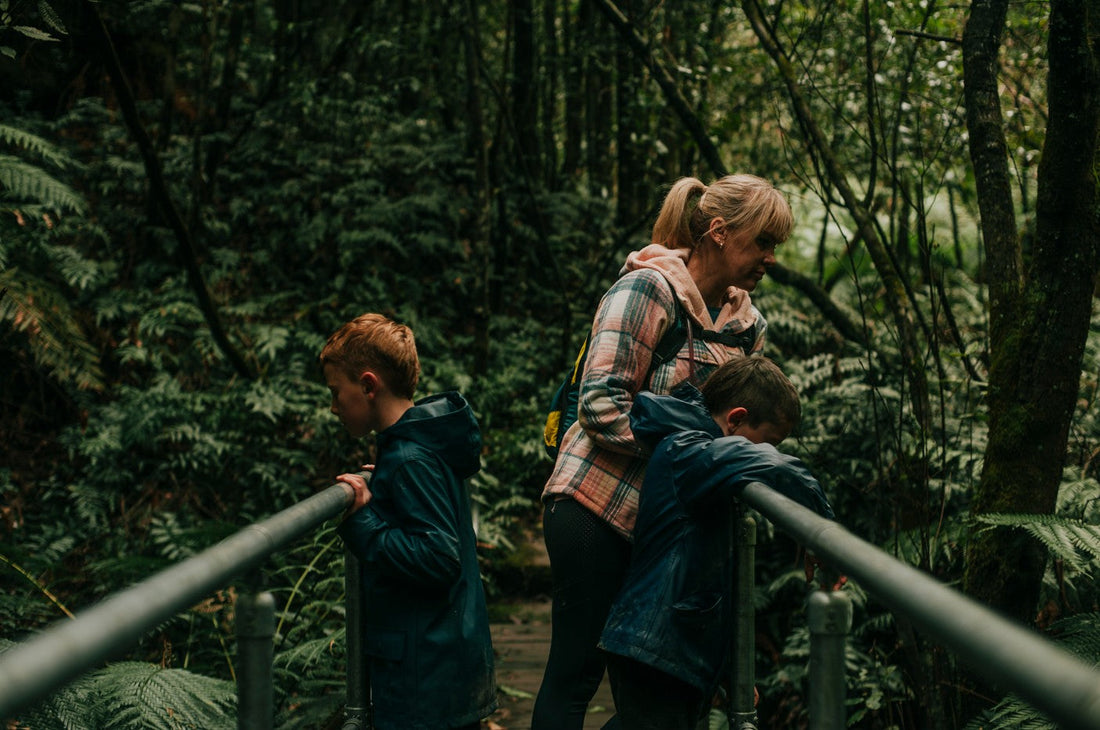
Teaching Kids Trail Safety
Share
Teaching Kids Trail Safety: How to Prevent Getting Lost
If you’re hiking with kids, teaching them how not to get lost — and what to do if they do — is just as important as packing snacks or checking the weather. While the bush can be a magical place, it’s also easy to get disoriented, especially for little legs that wander and curious minds that dart ahead.
Before you hit the trail, here are a few simple strategies to build confidence and safety skills in young hikers — without instilling fear.
Quick Tips at a Glance
- Start trail safety chats at home
- Choose visible, well-marked tracks for early hikes
- Dress kids in bright colours
- Teach the ‘Hug a Tree’ method
- Role-play “What would you do if...?”
- Equip them with basic tools (whistle, name tag, emergency snack)
- Reinforce boundary rules
- Always do a head count — often
Start Trail Safety Conversations at Home
Trail safety isn’t just a trailhead talk. Introduce the concept of staying safe in the bush during story time, at the dinner table, or while packing backpacks. Keep it calm and matter-of-fact — kids absorb more than we think, especially when it’s woven into everyday moments.
Some helpful things to explain ahead of time:
- The difference between a track and the bush
- Why it’s important to stay where adults can see them
- What to do if they can’t see you anymore
Make it a conversation, not a lecture.
Make Kids Easy to Spot
Bright clothing can make a huge difference. A neon raincoat, a colourful hat, or even a fluoro ribbon tied to their daypack helps kids stand out in the undergrowth. It also makes scanning the trail easier for you.
Take a photo of each child at the start of the hike — this is useful in case of emergencies and gives you a real-time reference of what they’re wearing.
Teach the Hug a Tree Method
The “Hug a Tree” method is a classic for a reason. If a child realises they’re lost, the instruction is simple:
Stop, stay still, and hug a tree.
Explain that moving around can make it harder for grown-ups or rescuers to find them.
You can practice this on trail by pretending to "lose" each other (within sight!) and having them hug a nearby tree. Keep it lighthearted but repeat the key message: stay put.
Role-play Realistic Scenarios
On the trail or at home, run through pretend situations like:
- What would you do if you couldn’t see me anymore?
- What if someone asked you to follow them?
- What would you do if you needed help?
Let them come up with ideas first before you guide them. Role-play helps them think through choices and prepares them to stay calm under pressure.
Give Them Simple Safety Gear
Children can carry:
- A small whistle (only to be used in emergencies — demonstrate how to use it)
- A name tag with your contact number
- A snack or treat to help them stay put and stay calm if separated
Explain how and when to use each item. Avoid overwhelming them — the goal is to help them feel prepared, not panicked.
Establish Trail Boundaries
Make it clear what’s okay and what’s not:
- “You can walk ahead until you reach that log, then wait.”
- “You must always be able to see me — if you can’t, stop walking.”
Boundaries give freedom within structure. As kids grow more confident and experienced, these rules can shift — but early consistency is key.
Stay Attentive and Count Often
When hiking with multiple kids, especially in groups, keep counting. At every major turn, crossing, or rest stop, quietly do a head count. It’s easy to assume someone else is watching — having one designated adult in charge of headcounts can help avoid confusion.
If the kids are old enough, consider giving them a buddy system — each child responsible for looking out for one other.
Final Thought
Kids don’t need to be afraid of getting lost — but they do need to know what to do if it happens. The bush teaches kids confidence, resilience, and awareness. By preparing them well and reinforcing safety as part of every adventure, you're setting them up for a lifetime of safer hikes.